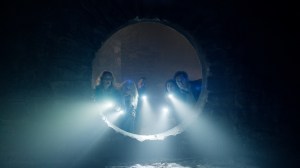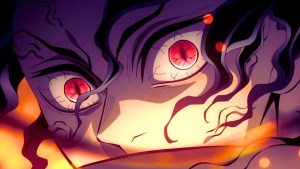The stark aging difference between Jude Law’s Albus Dumbledore and Michael Gambon’s wise Hogwarts director has long puzzled fans of the Wizarding World franchise. In the more recent Fantastic Beasts films, set in the 1920s, Law portrays a relatively youthful Dumbledore with brown hair, smooth skin, and an energetic demeanor. Yet, when audiences see the character in Harry Potter and the Half-Blood Prince during a flashback set in 1938, Gambon depicts a dramatically aged version of the wizard, complete with graying hair, deep wrinkles, and a much older appearance. The drastic changes in Dumbledore’s age happened within what should have been just twelve years, puzzling dedicated fans of the Harry Potter timeline.
Videos by ComicBook.com
Of course, the brief time gap between the Fantastic Beasts era and Dumbledore’s visit to young Tom Riddle at the orphanage doesn’t justify such a dramatic aging process, especially for a wizard, as the franchise establishes that magical folk typically age more slowly than non-magical people. The issue becomes even more pronounced when considering that Dumbledore’s appearance barely changes between this 1938 scene and the main Harry Potter series set in the 1990s. So far, fans have long considered this stark visual contrast a continuity error, a retcon introduced by Fantastic Beasts due to a lack of attention to the canon. However, there might be a way to make all the pieces fit once more.
[RELATED: Harry Potter Fans Still Can’t Get Over This Ron Weasley Mystery in Deathly Hallows]
A new theory proposed by Reddit user FunCartoons offers an innovative explanation that draws from the franchise’s magical lore: Dumbledore’s accelerated aging could result from extensive Time-Turner use. Time-Turners, magical devices introduced in Harry Potter and the Prisoner of Azkaban, allow wizards to travel back in time. The wondrous tool comes with a catch, though: while using it, a person’s biological clock continues ticking even as they move through time.
How Time-Turner Usage Could Explain Dumbledore’s Transformation
In Prisoner of Azkaban, Hermione Granger (Emma Watson) uses a Time-Turner to attend multiple classes simultaneously, essentially living extra hours each day. While the film never explicitly states the long-term effects of such use, it establishes that Time-Turner users physically experience every hour they revisit, potentially adding significant time to their biological age through extended use.
The theory suggests that during the tumultuous period between the Fantastic Beasts era and his visit to Tom Riddle, Dumbledore extensively used time travel to combat the rising threat of Gellert Grindelwald. Each use of the Time-Turner would have added hours or days to his biological age, potentially aging him years beyond the actual passage of time. This explanation addresses the visual discrepancy and enriches the character’s story, suggesting his aged appearance results from his tireless efforts to protect the Wizarding World.
It’s no wonder the theory has resonated with fans, as it takes what appeared to be a simple casting inconsistency and adds a deeper layer of Dumbledore’s sacrificial dedication to the greater good. While the reality is that the writers of the Fantastic Beast trilogy most likely ignored this detail, the fan theory allows Potter-heads to embrace a clever solution that keeps their canon intact.
With the franchise soon to become a TV show at HBO, Warner Bros. will take another shot at the beloved universe. Hopefully, the creative minds working on the live-action series will find innovative solutions for any eventual plot hole or contradiction. If they ever need help, some fans have already proved they have a knack for the canon.
The Fantastic Beasts trilogy and all eight Harry Potter movies are currently available for streaming on Max.








